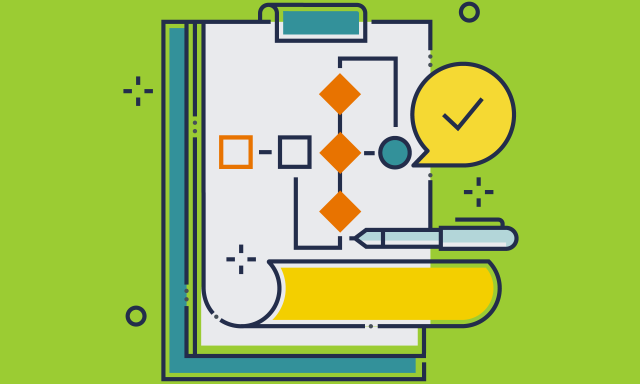

 Article
Article

 Business decisions can be daunting; risk is a factor, stakes can be high, and analysis may integrate both quantitative and intangible dimensions. In the pursuit of more and better data, decision-makers should not neglect another essential element of the process: the evaluation of all possible outcomes.
Business decisions can be daunting; risk is a factor, stakes can be high, and analysis may integrate both quantitative and intangible dimensions. In the pursuit of more and better data, decision-makers should not neglect another essential element of the process: the evaluation of all possible outcomes.

Insights from
Written by
In the 1970s, a small vineyard in the Napa Valley was facing a tough decision. Freemark Abbey Winery had a crop of Riesling grapes that were close to ripening. Taking them from the vine at the point of maturity would yield a perfectly reasonable, if perhaps mediocre, wine. But there were reports of a storm heading toward the winery a little later, and if the grapes were exposed to just the right amount of rain, they might develop a type of “noble rot,” which would produce a far superior, sweeter wine. This wine could be sold to wholesalers for a far greater price.
The dilemma for Freemark Abbey: Should they harvest now and cash in on a sure thing or take their chances and wait?
The Freemark Abbey story caught the attention of business scholars and was converted into a case study. Over time, the case has become a hallmark in business education because it shines a clear light on so many of the dynamics at play in decision-making — dynamics that might seem both complex and mysterious.
Making business decisions can feel daunting either because the associated stakes can be very high or because they integrate both quantitative and intangible dimensions — oftentimes all of the above.
But if the Freemark Abbey case demonstrates anything clearly, it’s this: All of these variables can be broken down, understood and assessed, taking something of the complexity and mystery out of the process of making the optimal decision for leaders and organizations. So says Darden Professor Yael Grushka-Cockayne, who serves as both the Altec Styslinger Foundation Bicentennial Chair and senior associate dean for professional degree programs.
Grushka-Cockayne teaches the Freemark Abbey Winery case as a core part of Darden Executive Education and Lifelong Learning’s Women in Leadership Program. And not only does it illuminate what’s involved in robust decision-making, it reflects the kinds of choices leaders have to grapple with every day, and how they can face the element of risk that accompanies choosing the best course of action. Of note, research indicates that women more than men can be prone to risk aversion.1
“The case is a typical, fairly common binary choice that elicits a yes or no answer: Harvest now or wait until later? And it gets people talking about their attitudes to risk from the get-go,” Grushka-Cockayne notes. “Some want the sure thing, and others will try to avoid the risk because of the potential damage to reputation. In leadership, we often struggle to integrate quantitative data and hard numbers with more intangible things, like reputation.”
In reality, says Grushka-Cockayne, even intangibles can be assigned a dollar value, though leaders typically tend to separate them or even use them “like a wand” as an excuse to ignore numbers. What the Freemark Abbey Winery story elucidates, however, is the value in “pausing, laying everything out and searching for the bigger picture.”
“With Freemark Abbey, the probability of rain is given as 50-50, and that leads to discussions about the reliability of meteorology itself,” she says. “This tends to open up an important conversation about the quality of data and the need for more and more of it.”
But a fuller analysis of every factor at play, including the winery’s financial history and robustness, its existing stock, the market, prices, and all of the potential outcomes attached to different scenarios and decisions, reveals something compelling: Even if the probability of rain were to fall to an absolute zero percent, all things considered, the winemakers would still in fact be better off — both financially and in reputational terms — by delaying the harvest of the crop.
In other words, having more data — perfect data, even — around the probability of rain still doesn’t change the final and best decision. And this highlights something absolutely critical. In the organizational setting, leaders routinely feel like they don’t have enough data to make a decision. Yet all too often, we forget to ask good questions about the actual value of data — and whether more of it would change our choices, says Grushka-Cockayne.
“Leaders often pause to collect more data ahead of a big decision, without really questioning what bearing that data has,” she says. “We set such a high premium on information that without great quantities of it, we might at times delay decisions for no really good reason. Or we pay money for market surveys, and the like, that in the end have no effect on our decision-making.”
For leaders, the Freemark Abbey Winery story holds a number of critical insights, says Grushka-Cockayne. These insights can help mitigate some of the complexity and diminish doubt or risk-aversion that can lead to hesitancy in decision-making.
“Women are still more prone to risk-aversion and at times self-doubt in their decision-making than men,” Grushka-Cockayne says. “In programs such as ours, and through the work we do using cases like this, there is so much that we can do to bolster confidence by demystifying these processes. The tools and frameworks that we can deploy as leaders are absolutely game-changing.”
The preceding is drawn from Women in Leadership, a white paper featuring evidence-backed techniques and tools that leaders can leverage to reconfigure the playing field — for themselves and others.
Grushka-Cockayne’s research and teaching activities focus on decision analysis, forecasting, project management and behavioral decision-making.
As an expert in the area of project management, she has served as a consultant to international firms in the aerospace and transportation industries. She is the secretary/treasurer of INFORMS Decision Analysis Society, a U.Va. Excellence in Diversity fellow and member the Project Management Institute.
B.Sc., Ben-Gurion University; M.Sc., London School of Economics; M.Res., Ph.D., London Business School